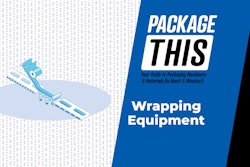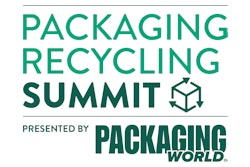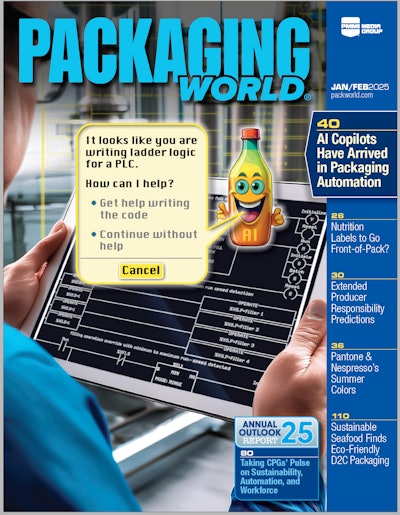We begin with a summary of the situation.
No one was seriously sickened, the company says, but a “moldy, musty or mildew-like odor” was detected in a small number of product lots. This led to a recall of some of the company’s popular OTC products. McNeil says the odor came from “trace amounts of a chemical called 2,4,6-tribromoanisole (TBA),” which they call a breakdown product of “a chemical that is sometimes applied to wood that is used to build wood pallets” to move packaging materials, in this case evidently the polymer bottles used to hold its products.
They recalled potentially affected products, are continuing to investigate the issue, are stopping shipments of products made with materials shipped on these pallets, and are asking suppliers to stop using those pallets.
This column is specifically not designed to determine what the ultimate cause of the problem may have been, or how it might be prevented in the future. We leave that to folks with more facts.
However, this incident inspires comments about two aspects of FDA’s regulatory scheme over products of this type.
The first is that if indeed this was a scenario in which drug packaging materials themselves became contaminated by an odor from surrounding materials (pallets), it’s a good reminder that manufacturing practices encompass essentially every step and every thing in a production and manufacturing process. Anyone with quality control as part of their job function probably knows that FDA’s regulations on Current Good Manufacturing Practices are as wide as they are deep.
FDA’s Current Good Manufacturing Practices (“cGMPs”) regulations are a framework of requirements that touch all aspects of an operation.They require setting of parameters for operations, training employees to make sure to meet them, then careful documentation and oversight to make sure all operations are done within the parameters. The goal is to assure the product is made right every time.
Most observers would logically expect that the regulations would address handling of raw materials for a drug product, and all the manufacturing steps, and they do. What is often surprising to newcomers to the field, though, is that they also cover buildings and facilities, personnel, equipment, records, and yes, packaging containers and closures.
If you only perform some of the operations covered by the regulations, but not others—if you only repack drugs, or only warehouse and distribute them, or only make component substances, for some examples—you still need to comply with the regulations that cover the aspects you do perform. Failure to comply with the regulations makes the drugs adulterated, and thus unlawful.
Drug makers therefore need to build into their systems controls that assure that finished articles, and all components of them, including packaging and labeling, are protected from contamination or other hazards.
So while it’s not yet clear what caused the odor issues that led to McNeil’s problems, we do know it involved two aspects of packaging, so it’s useful to see the incident as a reminder of the nature of the duty imposed by FDA’s cGMP regulations, especially the broad-based perspective and constant vigilance they require.
Second, as this incident invokes specific qualities and characteristics of individual packaging materials, it’s a reminder that the suitability of drug packaging materials and structures is a central part of the drug approval process, as well. FDA wants to be assured that a new drug will be protected as need be against contamination, temperature, light, odor, or whatever other hazards could affect its characteristics, and makes a review of drug packaging part of the information it examines. Often, packaging makers use Drug Master Files to present the necessary data.
FDA’s Drug Master File process is a means by which packaging suppliers can create a confidential file at FDA about their materials and their properties. Drug approval applicants can refer FDA to these files when they want FDA to clear their new drug, but the packaging makers’ trade secrets are not revealed to their customers or the public. You don’t have to file one, but it’s a popular idea. FDA has over 19,000 DMFs.
There are DMFs for active ingredients, drug products, excipient chemicals (inactive ingredients), and packaging materials, and if your company has submitted a DMF there is a fair amount of care and feeding needed to assure its information is kept current and accurate. FDA recommends annual updates of technical details, and of the parties you have authorized to refer to the file’s information.
A DMF for a packaging material, referred to as a Type III DMF, must contain what are called chemistry, manufacturing, and controls information about the material to assure it is safe. Many of the same considerations apply as with food-contact materials (and many polymers and other materials contact food and also drug products).
And it’s something of a match game: Your DMF needs to contain the information demonstrating that your material has the characteristics that the drug it will package need it to have. In FDA parlance, the material must have the necessary “suitability” to adequately protect the product; be compatible with it; be safe; and function properly.
Packagers who are not already familiar with the DMF process are well advised to find out more if they intend to be in the market to supply drug or biological product companies.
The betting here is that we will hear more in coming months about the McNeil recall, and the incident may carry important lessons for the packaging and drug industries. For now, it’s a useful reminder of packaging’s place in the FDA regulatory scheme.
Eric can be reached at [email protected],
and visit his firm’s Web site at www.ericfgreenbergpc.com.


























